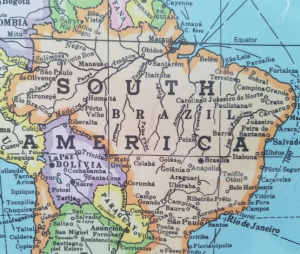NewsDesk @bactiman63
The Brazil Ministry of Health warns of the increase in cases and deaths from spotted fever, especially in the Southeast region. When the climate is dry, there is a higher incidence of ticks. Therefore, care must be redoubled for those who come into contact with forest areas and even gardens with the probability of the existence of the arthropod. Care for domestic animals also needs to be intensified, as they can be hosts for ticks.

Rocky Mountain spotted fever (RMSF) is an acute, febrile, infectious disease of varying severity. It can present from mild and atypical clinical forms to severe forms, with a high lethality rate. Treatment should be started with antibiotics after the first symptoms appear to avoid serious complications such as brain inflammation, paralysis, respiratory failure or kidney failure, which can endanger the patient’s life.
In Brazil, two species of this bacterium are associated with clinical features of spotted fever: Rickettsia rickettsii, recorded in the north of the state of Paraná and in the states of the Southeast region; and Rickettsia parkeri, which has been recorded in Atlantic Forest environments (Rio Grande do Sul, Santa Catarina, Bahia and Ceará).
Subscribe to Outbreak News TV on YouTube
In 2022, until September 22, 67 cases of spotted fever were confirmed in Brazil, of which 26% (18) died. The deaths occurred in the states of Sao Paolo (11), Minas Gerais (1), Rio de Janiero (1) and Maranhão (1). Four deaths did not have their states informed about the site of infection. In 2021, about 233 confirmed cases were registered in the country, with 70 deaths.
The main symptoms of Rocky Mountain spotted fever are fever, severe headache, nausea, vomiting, diarrhea, abdominal pain, constant muscle pain, swelling and redness in the palms of the hands and soles of the feet, and gangrene in the fingers and ears.
The disease can also cause paralysis of the limbs, starting in the legs, reaching the lungs, causing respiratory arrest. In addition, with the evolution of Rocky Mountain spotted fever, it is common for the appearance of red spots on the wrists and ankles, which do not itch, but can increase towards the palms of the hands, arms or soles of the feet.
Timely diagnosis of Rocky Mountain spotted fever is difficult, especially during the first few days of illness, as the symptoms are also similar to other diseases, such as leptospirosis, dengue, viral hepatitis, malaria, measles, or pneumonia.
However, it is important that the person with symptoms of the disease see a doctor so that they can evaluate the symptoms. During the consultation, the doctor will seek to know if the person lives in a wooded or forested region, where he may have been bitten by a tick. The healthcare professional will also order tests to confirm the diagnosis.
As soon as the first symptoms appear, it is important to look for a health unit for medical evaluation. Treatment is with a specific antibiotic and should be started at the time of suspicion. In certain cases, hospitalization of the person may be necessary. The lack or delay in the treatment of spotted fever can aggravate the case, and can lead to death.
The prevention of spotted fever is based on preventing contact with the tick. The Ministry of Health recommends the adoption of some measures to prevent the disease, especially in places where there is exposure to ticks:
- Wear light clothing to help identify the tick;
- Wear pants, boots and long-sleeved shirts when walking in wooded and grassy areas;
- Avoid walking in places with grass or tall vegetation;
- Use repellents that have tick protection;
- Perform control with antiparasitic in domestic animals;
- Remove ticks (if found on the body), preferably with the aid of tweezers (eyebrows or auxiliary surgical tweezers);
- Do not crush the tick with your fingernails, as it can release bacteria and contaminate injured body parts.
- The faster the ticks are removed from the body, the lower the risk of contracting the disease.
Related:
Haiti cholera cases increase to 12
Rio de Janeiro reports 2nd monkeypox death
Puerto Rico officials now report 72 suspected leptospirosis cases
Peru: Dengue cases nearly double 2021 numbers


One thought on “Brazil MOH warns of Rocky Mountain spotted fever in 2022”